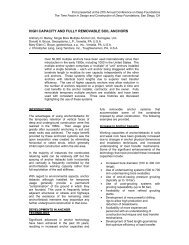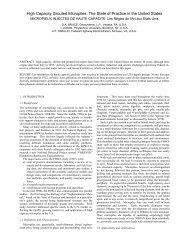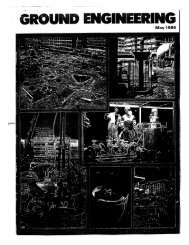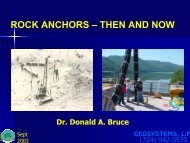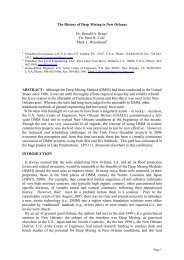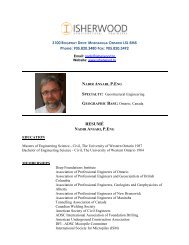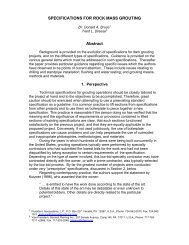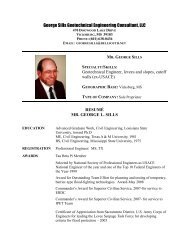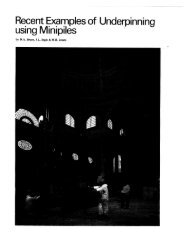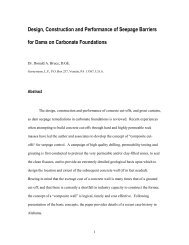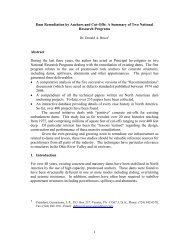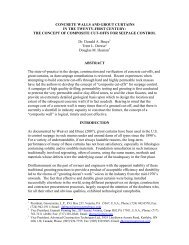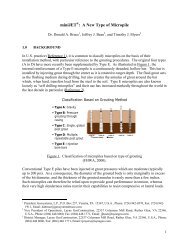SEEPAGE CUT-OFFS FOR LEVEES: A ... - Geosystems, L.P.
SEEPAGE CUT-OFFS FOR LEVEES: A ... - Geosystems, L.P.
SEEPAGE CUT-OFFS FOR LEVEES: A ... - Geosystems, L.P.
Create successful ePaper yourself
Turn your PDF publications into a flip-book with our unique Google optimized e-Paper software.
The soilcrete is typically more homogeneous than the equivalent material produced by<br />
conventional DMM methods and, of course, there are fewer inter-element joints (Figure<br />
9) and less waste since re-penetrations are not required.<br />
Particular Notable Advantages<br />
• Continuity of the wall is provided by very strict control of panel verticality in real<br />
time.<br />
• Soilcrete is relatively homogeneous and the grout properties can be designed to<br />
provide specific parameters.<br />
• Applicable in all soil conditions, including dense/stiff deposits.<br />
• Cutting teeth can be quickly adjusted to different soil conditions.<br />
• CSM equipment can be mounted on a wide range of “conventional” carriers.<br />
• Productivity can be very high in appropriate conditions.<br />
• The method can easily accommodate sharp changes in wall alignment.<br />
• Relatively quiet and vibration free.<br />
Particular Potential Drawbacks<br />
• As for all DMM variants, boulders and other obstructions, and very dense deposits, or<br />
rock-like layers will severely impact feasibility and productivity.<br />
• The typical machine requires considerable headroom and access.<br />
Unit Costs<br />
Mob/demob: $50,000-$100,000<br />
Unit Price: $20-$40/sf<br />
Overall Verdict<br />
CSM, in its various evolutions, has spread very quickly across several continents over the<br />
last 4 years. This is a very telling observation with respect to the attractiveness of the<br />
system from both technical and commercial viewpoints. Of particular attraction is<br />
CSM’s facility to be installed on standard base machines and the high level of<br />
understanding of the relationship between cutting and mixing wheel design, in situ<br />
product quality, and productivity. However, given the fundamentals of its cost base, it<br />
will not be competitive in situations where low technology approaches can be used<br />
acceptably.<br />
OVERVIEW<br />
Table 2 summarizes the salient details of the various technologies reviewed in this paper.<br />
Figure 12 provides a comparison of the depth capabilities of the different methods.<br />
The authors hope that this paper, and the reference list it contains, will be of practical use<br />
to colleagues involved in all aspects of levee remediation with cut-offs.



